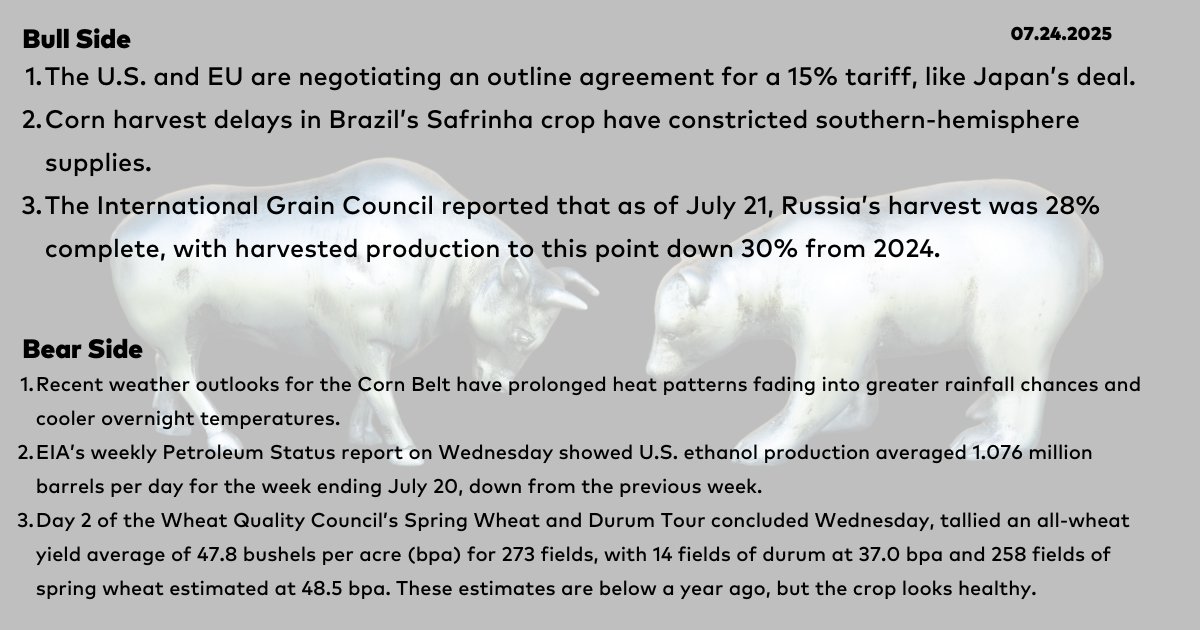Global Fertilizer Market Report: Linkages to Sustainable Development Goals
Executive Summary: Market Dynamics and SDG Implications
This report analyzes recent developments in the global fertilizer market, focusing on major project updates and price volatility. These factors have significant implications for the achievement of several United Nations Sustainable Development Goals (SDGs), particularly those related to food security, economic growth, and responsible production.
- Supply Chain Disruptions: Delays and cost overruns in major production facilities, such as the Jansen potash project, threaten the stability of fertilizer supply, directly impacting SDG 2 (Zero Hunger) by affecting agricultural inputs.
- Price Volatility: Significant price increases across most major fertilizers create economic pressure on agricultural producers, challenging the principles of SDG 12 (Responsible Consumption and Production) and potentially hindering progress towards SDG 2.
- Strategic Investments: New funding for projects like the Brazil Potash mine highlights the role of SDG 17 (Partnerships for the Goals) in developing critical infrastructure to support global food systems.
Analysis of Key Potash Infrastructure Projects
Jansen Project (Canada): Challenges to SDG 8 & SDG 9
The BHP Jansen potash project in Saskatchewan, a critical development for future global supply, is facing considerable setbacks. These challenges have direct consequences for SDG 8 (Decent Work and Economic Growth) and SDG 9 (Industry, Innovation, and Infrastructure).
- Cost Escalation: The projected cost has increased from an estimated $5.7 billion to a new range of $7.0 billion to $7.4 billion.
- Production Delay: The timeline for first production has been postponed from the end of 2026 to mid-2027.
- Causal Factors: BHP attributes these issues to a combination of inflationary pressure, design and scope modifications, and lower-than-expected productivity.
Brazil Potash Project: Partnership for Resource Development (SDG 17)
In a move that supports SDG 17 (Partnerships for the Goals), Brazil Potash has secured significant funding to advance its mining project. This development is crucial for enhancing regional agricultural resilience and contributes to SDG 2 by strengthening the local supply of essential crop nutrients.
- Funding Agreement: The company entered into an agreement with Fictor Energia for $200 million in project funding.
- Strategic Importance: This investment aims to develop a domestic potash source in Brazil, a major agricultural producer, thereby reducing reliance on imports and stabilizing a key component of the food production value chain.
Fertilizer Price Trends and Impact on Sustainable Agriculture (SDG 2 & SDG 12)
Recent price data indicates widespread inflation across the fertilizer market, placing a burden on farmers and affecting the economic viability of sustainable agricultural practices. This trend directly challenges the objectives of ensuring food security (SDG 2) and promoting sustainable production patterns (SDG 12).
Year-Over-Year Price Volatility
An analysis of year-over-year prices reveals substantial increases for seven of the eight major fertilizers tracked.
- UAN32: Increased by 33%
- Urea: Increased by 29%
- UAN28: Increased by 23%
- Anhydrous: Increased by 11%
- DAP: Increased by 5%
- 10-34-0: Increased by 5%
- MAP: Increased by 3%
- Potash Exception: In contrast, the price of potash has decreased by 5% compared to the previous year, offering some relief but underscoring the complex dynamics of the market.
Price Trend Analysis (July 2024 – July 2025)
Data from the DTN Fertilizer Index illustrates a clear upward trend for most fertilizers over the past year.
- Dry Fertilizers: Urea prices demonstrated a significant upward trajectory, rising from $506 in July 2024 to $654 in July 2025. DAP and MAP also saw steady increases over the same period. Potash, after a dip in late 2024, trended upwards to $481 by July 2025.
- Liquid Fertilizers: UAN32 experienced a sharp price climb, moving from $377 in July 2024 to $499 in July 2025. Anhydrous and UAN28 followed a similar inflationary pattern throughout the year.
SDGs Addressed or Connected to the Issues Highlighted in the Article
- SDG 2: Zero Hunger – The article’s core subject is fertilizers (potash, DAP, MAP, urea, etc.), which are essential inputs for agriculture and food production. Price fluctuations and supply issues, such as the delay in the Jansen potash project, directly impact agricultural productivity and food security.
- SDG 8: Decent Work and Economic Growth – The article discusses large-scale industrial projects like the BHP Jansen potash mine and the Brazil Potash project. These projects are significant drivers of economic activity, investment, and employment, but they also face challenges like “lower-than-expected productivity” that affect economic growth.
- SDG 9: Industry, Innovation and Infrastructure – The expansion of the Jansen potash facility is a major infrastructure project. The article highlights challenges in its development, including cost overruns (“will now cost from $7 billion to $7.4 billion”) and delays, which are central to the goal of building resilient infrastructure.
- SDG 12: Responsible Consumption and Production – Potash is a mined, finite natural resource. The article discusses its extraction and pricing, which relates to the sustainable management and efficient use of natural resources.
Specific Targets Under Those SDGs
SDG 2: Zero Hunger
- Target 2.4: By 2030, ensure sustainable food production systems and implement resilient agricultural practices that increase productivity and production.
- Explanation: The availability and affordability of fertilizers, as discussed extensively in the article, are critical for increasing agricultural productivity. The rising prices of seven different fertilizers and the production delay of a major potash mine directly challenge the resilience of food production systems that rely on these inputs.
- Target 2.c: Adopt measures to ensure the proper functioning of food commodity markets and their derivatives and facilitate timely access to market information… in order to help limit extreme food price volatility.
- Explanation: The article is a clear example of providing market information. It explicitly mentions the “DTN Fertilizer Index,” which is compiled from “fertilizer price bids from agriculture retailers each week.” The detailed price data table and analysis of price changes (“UAN32 by 33%”) serve to inform stakeholders and help manage the effects of price volatility in a key agricultural input market.
SDG 8: Decent Work and Economic Growth
- Target 8.2: Achieve higher levels of economic productivity through diversification, technological upgrading and innovation.
- Explanation: The article points to challenges in achieving this target by citing “lower-than-expected productivity” as a reason for the cost increase at the Jansen potash project. This directly addresses the concept of economic productivity within a major industrial project.
SDG 9: Industry, Innovation and Infrastructure
- Target 9.1: Develop quality, reliable, sustainable and resilient infrastructure… to support economic development.
- Explanation: The Jansen potash project is a piece of industrial infrastructure. The article’s focus on its delay (“pushing back its estimate for first production… to mid-2027”) and cost overruns due to “inflationary pressure” and “scope changes” highlights the challenges in developing reliable infrastructure.
SDG 12: Responsible Consumption and Production
- Target 12.2: By 2030, achieve the sustainable management and efficient use of natural resources.
- Explanation: Potash is a natural resource. The article discusses its extraction and the productivity of the mining facility. The mention of “lower-than-expected productivity” at the Jansen project implies a less-than-optimal efficiency in the use of resources (capital, labor, and potentially the mineral resource itself) for production.
Indicators Mentioned or Implied in the Article
For SDG 2 Targets
- Implied Indicator for Target 2.c: Indicator of food price anomalies.
- Explanation: The article provides direct data that can be used to measure this. The “DTN Fertilizer Index” is a tool for tracking price changes. The text quantifies these changes, stating that prices are higher for seven fertilizers, with specific figures like “urea 29% and UAN32 by 33%,” while potash is “lower in price by 5%.” The extensive table provides raw price data over time for multiple fertilizer types, which is the basis for calculating price volatility and anomalies.
For SDG 8 & 9 Targets
- Implied Indicator for Target 8.2 & 9.1: Investment in infrastructure and productivity.
- Explanation: The article provides a direct financial indicator of investment in infrastructure, stating the cost of the Jansen project has risen to “$7 billion to $7.4 billion.” It also provides a qualitative indicator of productivity by stating that “lower-than-expected productivity” is a cause for the increased costs.
For SDG 12 Targets
- Implied Indicator for Target 12.2: Domestic material consumption.
- Explanation: While not providing a total consumption number, the article’s entire focus on fertilizer prices and production projects (in Canada and Brazil) relates to the consumption of these materials. The price data table reflects the market value of these domestically and internationally traded materials, which is a component of tracking their consumption and economic importance.
Summary Table of SDGs, Targets, and Indicators
| SDGs | Targets | Indicators Identified in Article |
|---|---|---|
| SDG 2: Zero Hunger | 2.c: Adopt measures to ensure the proper functioning of food commodity markets… and facilitate timely access to market information… to help limit extreme food price volatility. | The “DTN Fertilizer Index” and the detailed price table serve as market information. Specific price changes are noted (e.g., “UAN32 by 33%,” “potash… lower in price by 5%”). |
| SDG 8: Decent Work and Economic Growth | 8.2: Achieve higher levels of economic productivity through… innovation. | A qualitative indicator is mentioned: “lower-than-expected productivity” at the Jansen project. |
| SDG 9: Industry, Innovation and Infrastructure | 9.1: Develop quality, reliable, sustainable and resilient infrastructure. | Financial investment figures (“$7 billion to $7.4 billion”) and project delays (“first production… to mid-2027”) are provided as indicators of infrastructure development challenges. |
| SDG 12: Responsible Consumption and Production | 12.2: Achieve the sustainable management and efficient use of natural resources. | The issue of “lower-than-expected productivity” in a mining operation implies inefficiency in resource use. |
Source: dtnpf.com






